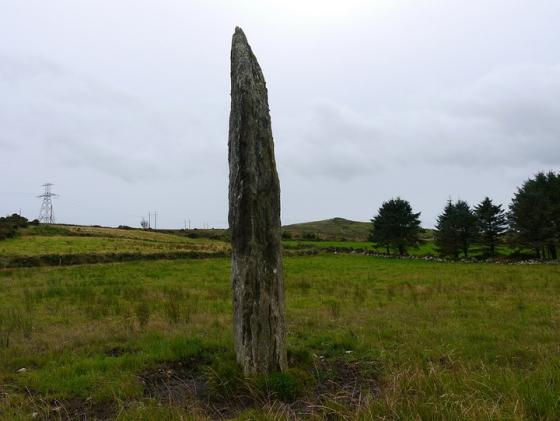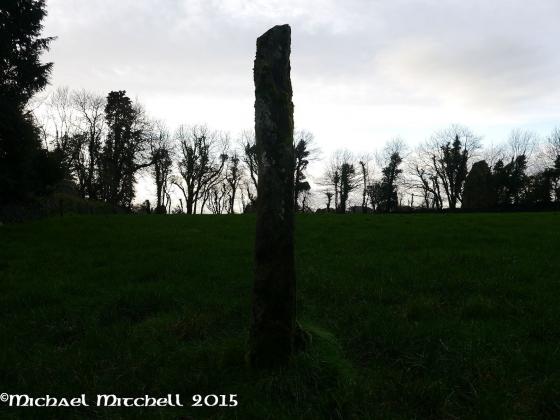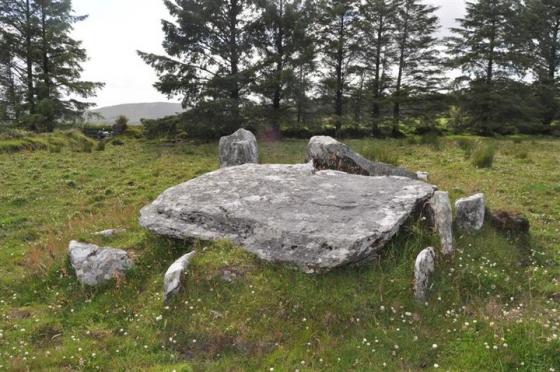
corkpastandpresent.ie/places/northcork/grovewhitenotes/caherduggantocastlehyde/gw2_42_58.pdf
From the ‘Grove White Notes’ on Cork City Council’s website.

corkpastandpresent.ie/places/northcork/grovewhitenotes/caherduggantocastlehyde/gw2_42_58.pdf
From the ‘Grove White Notes’ on Cork City Council’s website.
In the parish of Glantane formerly called Kilshannig, and six miles distant from Mallow is the place called Carrigcleena or Cleena’s Rock. It is a townland and gets its name from the conspicuous rampart of rock that is situated in it and pointed out as the entrance to the dwelling place of Cliodhna, the Fairy Queen. Many are the stories told about Cliodhna around this locality.
Cliodhna’s father was called the Red Druid and generally regarded as the last of the druids. He, it is said, was made prince of the territory which now embraces the town of Fermoy and its neighbourhood by the reigning King of Munster, whose life he had saved in battle when the latter was fighting with the High King of Ireland. On this occasion the Red Druid raised a great storm by his magical powers and compelled the High King’s forces to retire from the engagement.
Cliodhna and her sister Aeibhill are famous figures in Irish fairy lore, and their period is believed to have been the middle of the eighth century. Cliodhna, the elder daughter of the Red Druid, seems to have inherited strange powers like her father. She fell in love with a young chieftain named O’Kieffe, who was lord of the territory adjoining that of her father. But, unfortunately, the younger sister, Aeibhill, also became enamoured of the same chieftain, and this aroused the wrath of Cliodhna, who was of a proud, passionate and haughty disposition. Full of jealousy, Cliodhna resolved to make her own union with the chieftain secure at all costs, and to this end, as the story goes, she changed her sister Aeibhill with a magic wand into a beautiful white cat, after the latter had refused to renounce her affection for the man to whom Cliodhna was betrothed.
When the Red Druid and his wife learned of the fate of their daughter, they both took the sad news so much to heart that they died shortly afterwards. The Druid was buried on the summit of a hill about three miles from Rathcormac since called Carn Thierna, and his wife was laid to rest near Glanworth.
(N.B.: We read of some interesting finds recently, including the bones of a woman, in the great dolmen called Leaba Chaillighe, near Glanworth, Co. Cork. Were these the remains of the Red Druid’s wife, who, according to tradition was buried beneath this dolmen!)
But to return to the story, Cliodhna married the chieftain O’Kieffe, and all went well until he came to hear of her sister’s fate at her hands. They became estranged as a result and Cliodhna retired to an underground palace, having been discarded by her husband. This palace is, according to many accounts in the townland above mentioned viz., Carrigcleena, so called by the natives “the Rock.” This palace was long believed by the peasantry to be the scene of the general assembly of the fairies throughout Ireland, where they met to consider important matters relative to their race.
Aeibhill, after being enchanted by her sister took up residence, as local tradition goes, in an underground palace also, situated at Castlecor, near Kanturk, Co. Cork, beneath an old cave hidden by trees. It is also said that she resumes her natural form for a week each year at midsummer, appearing as a beautiful maiden of twenty. She was regarded as the guardian spirit of the Dalcassian race, and Queen of the Fairies of North Munster. The King of Ireland, Brian Boru, is reported as saying on the evening of the Battle Clontarf, that Aeibhill came to him the previous night and told him he should fall that day.
The last account of Cliodhna, as told by local residents around Carrigcleena, runs as follows:
Situated about two miles north of Carrigcleena, and on the road to Mallow, is a cross-roads called Pindy’s Cross, Pindy being a corruption of pente, Greek for five. There are five roads branching off at these cross-roads. It seems there was a smithy or forge at this spot long ago, no trace of which is to be found now. Cliodhna, mounted on a white horse, appeared before the forge and asked the smith to put a shoe on one of horse’s legs. This the smith promptly did. When leaving Cliodhna is reported to have called the smith’s attention to a clump of bracken that was quite green-looking and growing nearby. She said that she was leaving the place, but did not disclose where she was going, and gave the smith a sign whether she would return again or not. The sign was the green bracken. If, on the following day, the bracken was green as usual, she would return, but on the other hand, if the bracken was withered, then never again would she come back. The smith next day saw the bracken shrivelled up and withered, and Cliodhna has never been heard of since.
Written by Donal Archdeacon, a teacher at Carrigcleena More, for the 1930s Schools Collection of folklore. You can see the original document at Duchas.ie.
Disappointingly, there is a massive quarry here now. But there was a rath, a souterrain, and a naturally rocky craggy place.
Cleena had one of her palaces in the centre of a great rock, situated about five miles from Mallow, still well known by the name of Carrig-Cleena, and there is a legend attached to it, recounted by Windele, from which Cleena’s moral character appears to have been doubtful. A market or fair was held in the neighbourhood; and on these occasions she came out of her abode and carried off every good-looking young man at the fair who pleased her. It was told how a peasant one evening had seen the whole space about the rock brilliantly lighted up, the entrance door thrown open, and a fair lady standing within. Some people cultivated the ground around th rock with potatoes; but Cleena was heard within piteously wailing, as if lamenting the desecration, and the men desisted.
[...] Even Cleena had a more estimable side to her character. Some of the peasantry of the country around Carrig Cleena regard her in the light of a benefactress. In her neighbourhood no cattle die from the influence of the evil eye, nor the malignant power of the unfriendly spirits of the air. Her goodness preserves the harvest from the blights which dissipate the farmer’s hopes. The peasantry are the children of her peculiar care. She often appears, disguised in the homely garb of a peasant girl, to announce to some late wayfarer the expulsion from her dominions of invading spirits, and the consequent certainty of an abundant harvest.
From Traces of the Elder Faiths of Ireland by W G Wood-Martin (1902).
The NMS record quotes ‘Berry 1905’ “A wild and romantic spot... a rude elevation, surrounded by a rampart of huge rocks, towering over the country round, and enclosing about two acres of very green ground” – there was a soutterrain inside the fort which was ‘said locally’ to connect the rocks and the fort.
The quarriers didn’t get it all their own way though. This forum has someone saying “I rem as a child hearing it had a quarry and the machinery used to break down, go on fire etc. and it was blamed on Clíona, queen of the fairies and it didn’t stop until a mass was said there. ” and another person recalls the mass being about 30 years ago.
There are many variations on the fairy queen’s name of Clíodhna. Anne Ross (’Pagan Celtic Britain’) connects her with the British Rhiannon, as they both have three otherworldly birds as assistants (as you may see here and here).































